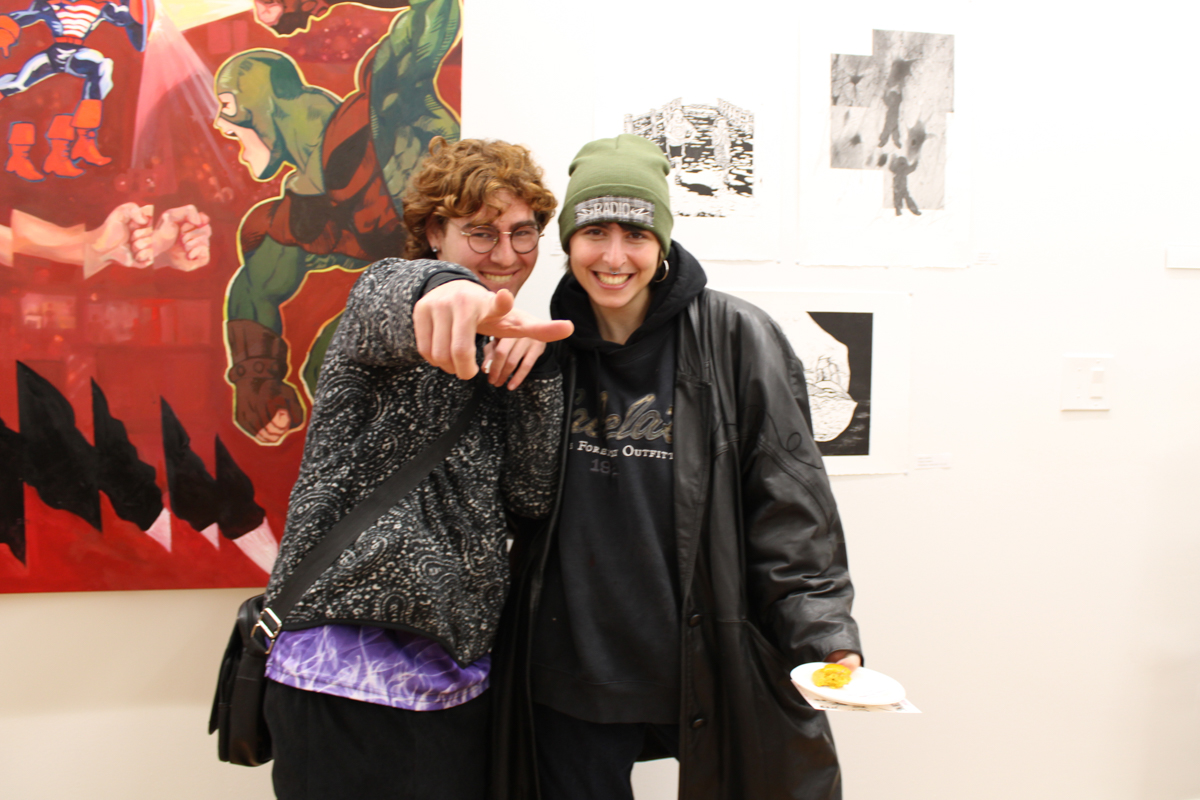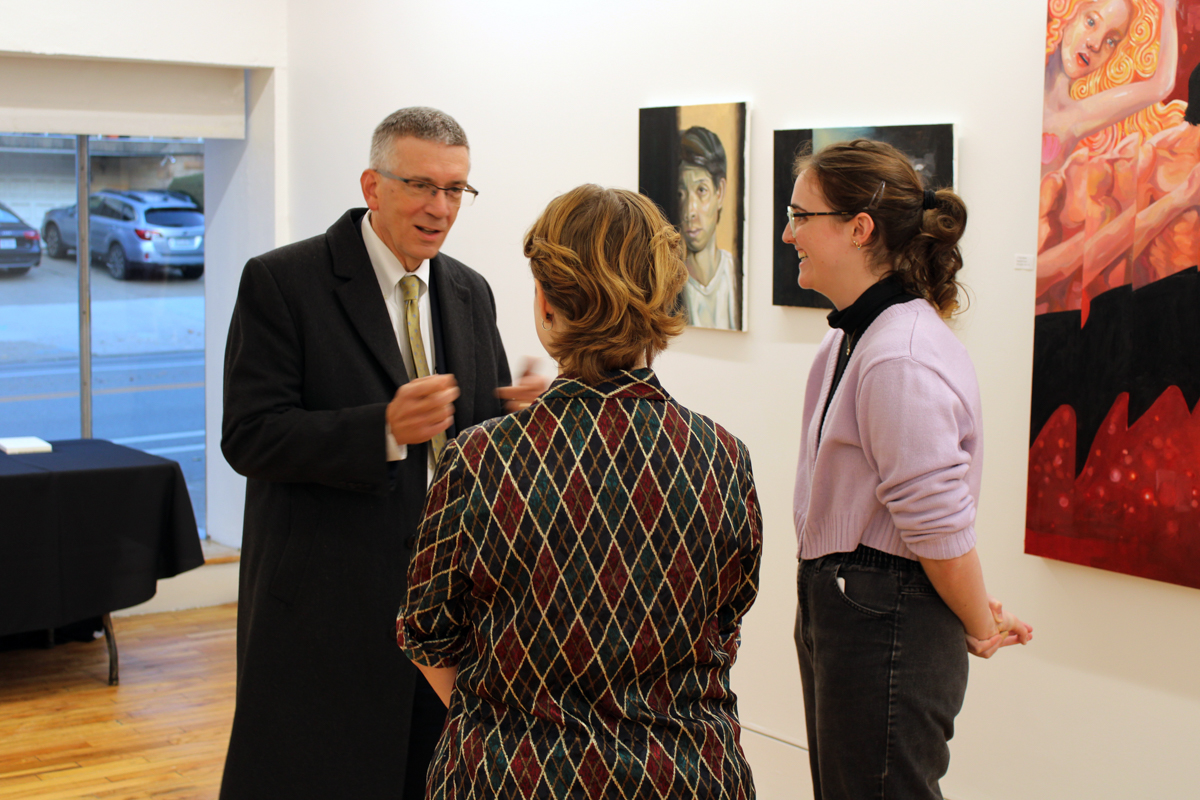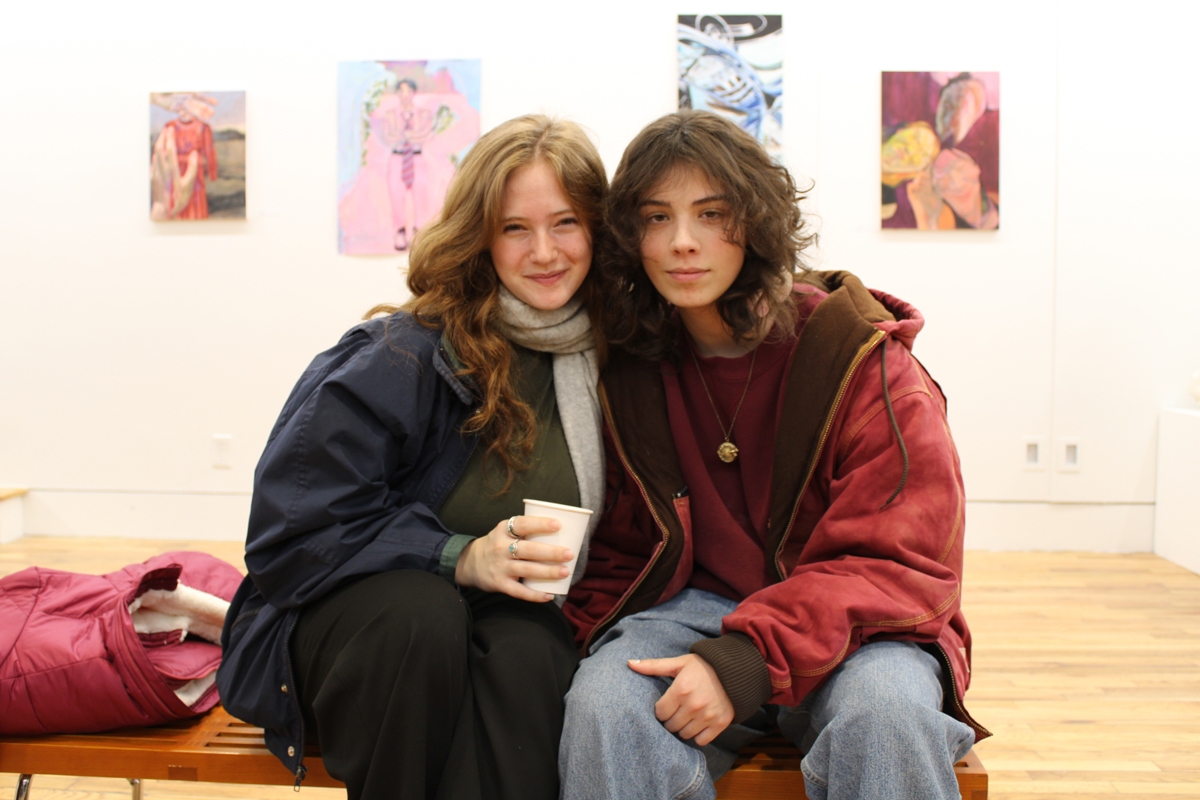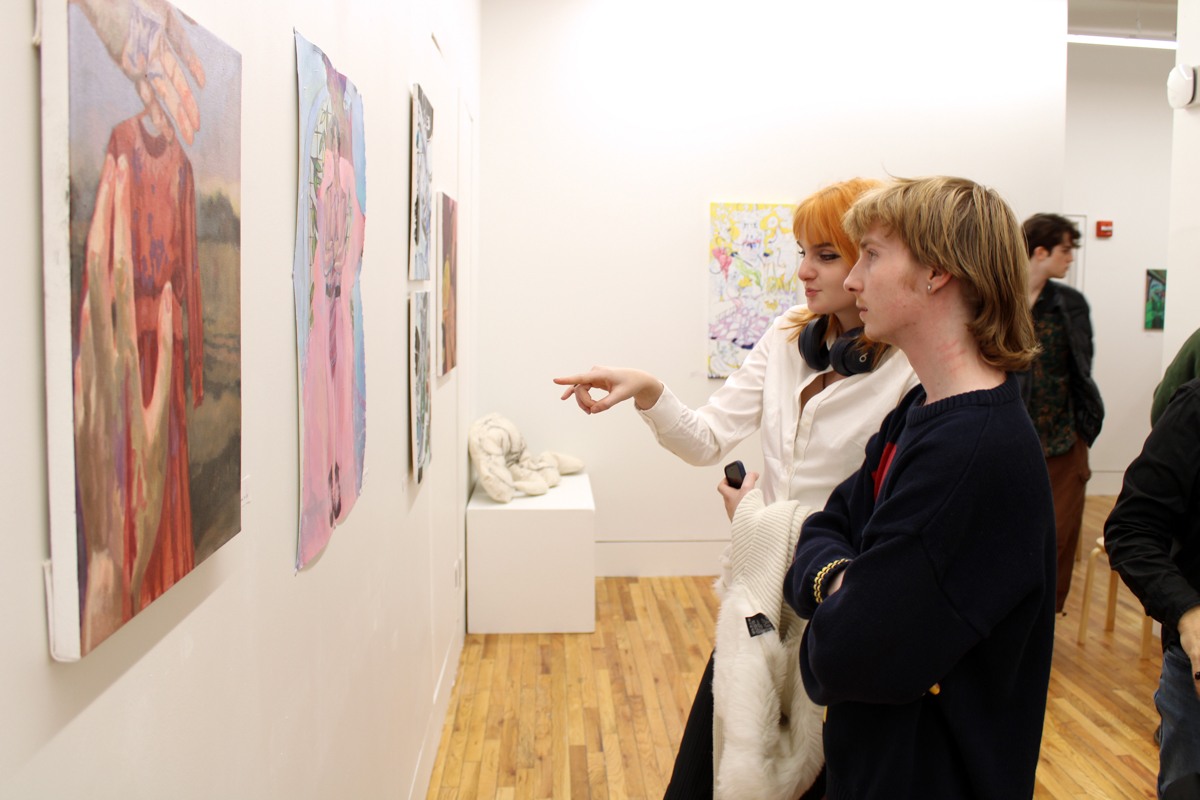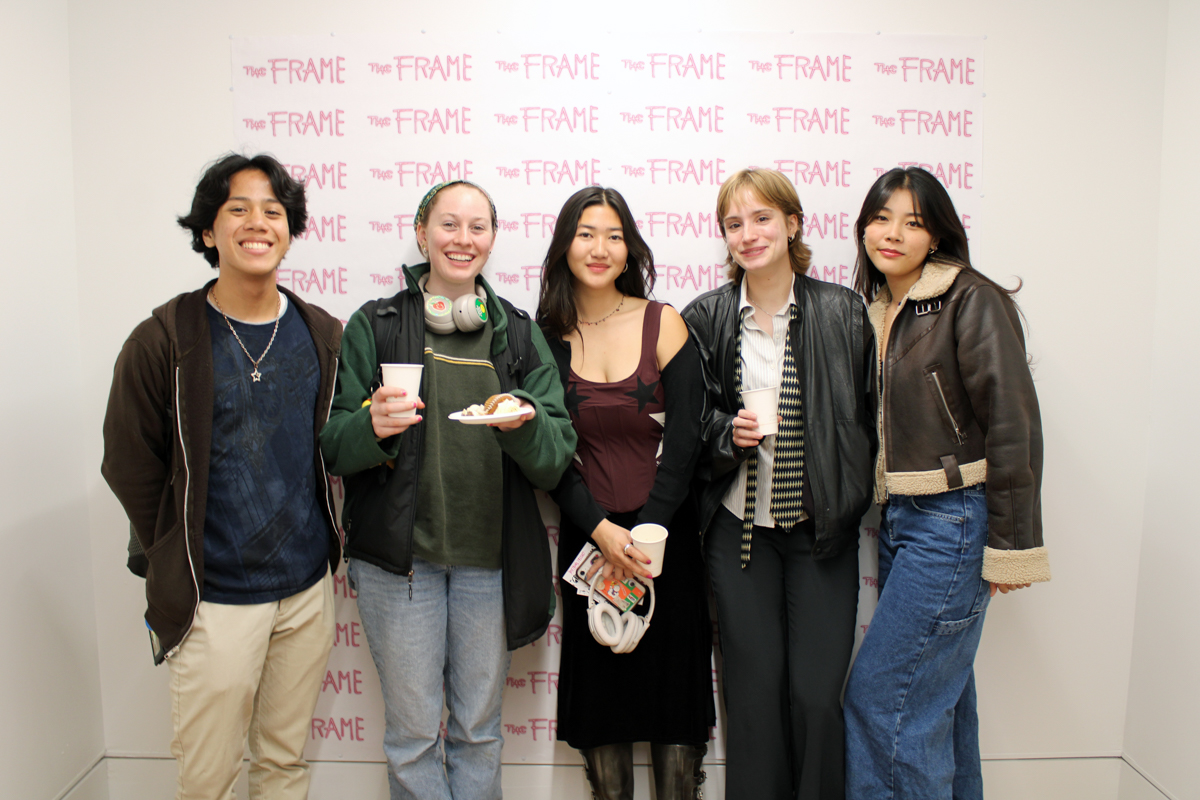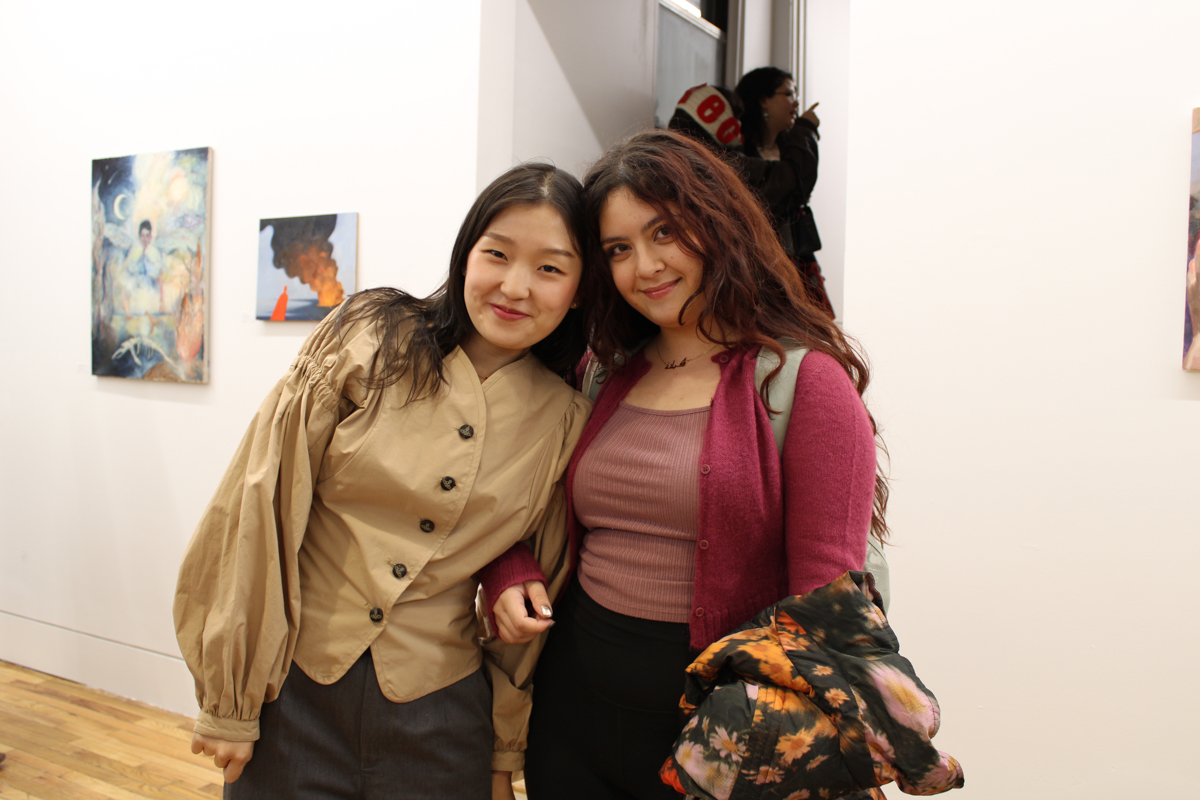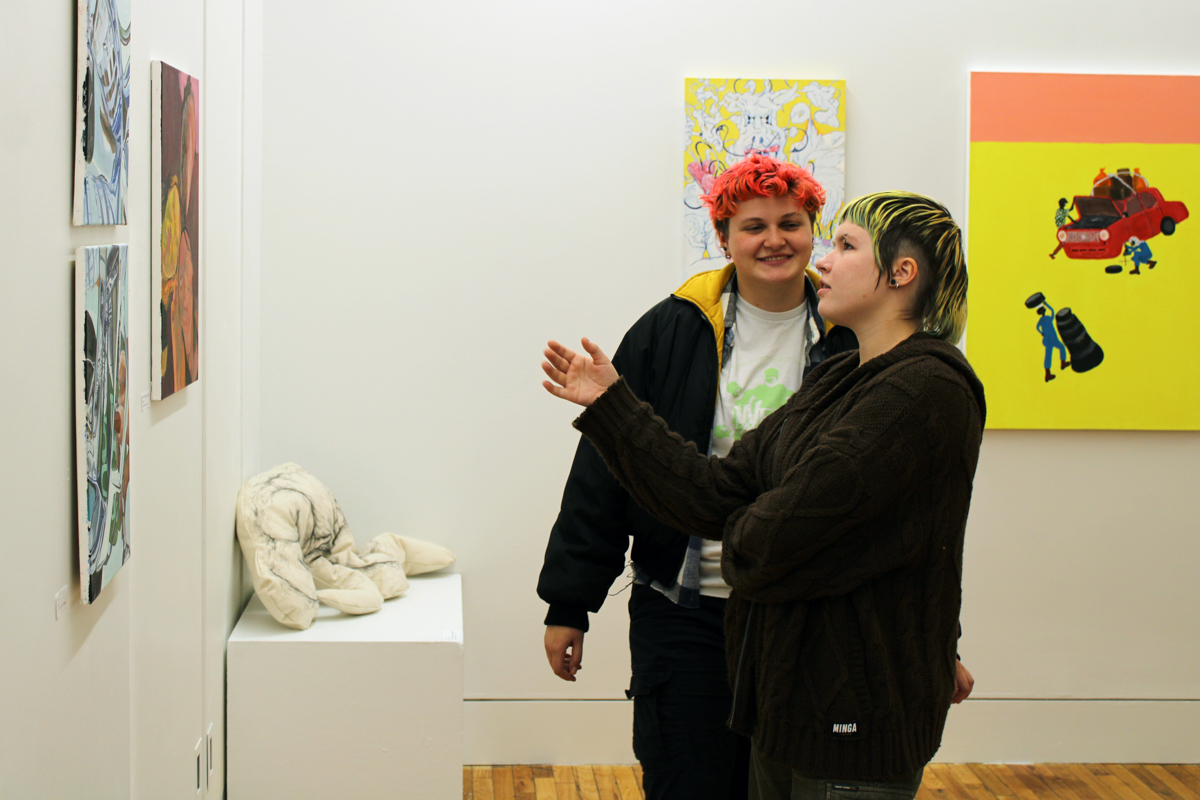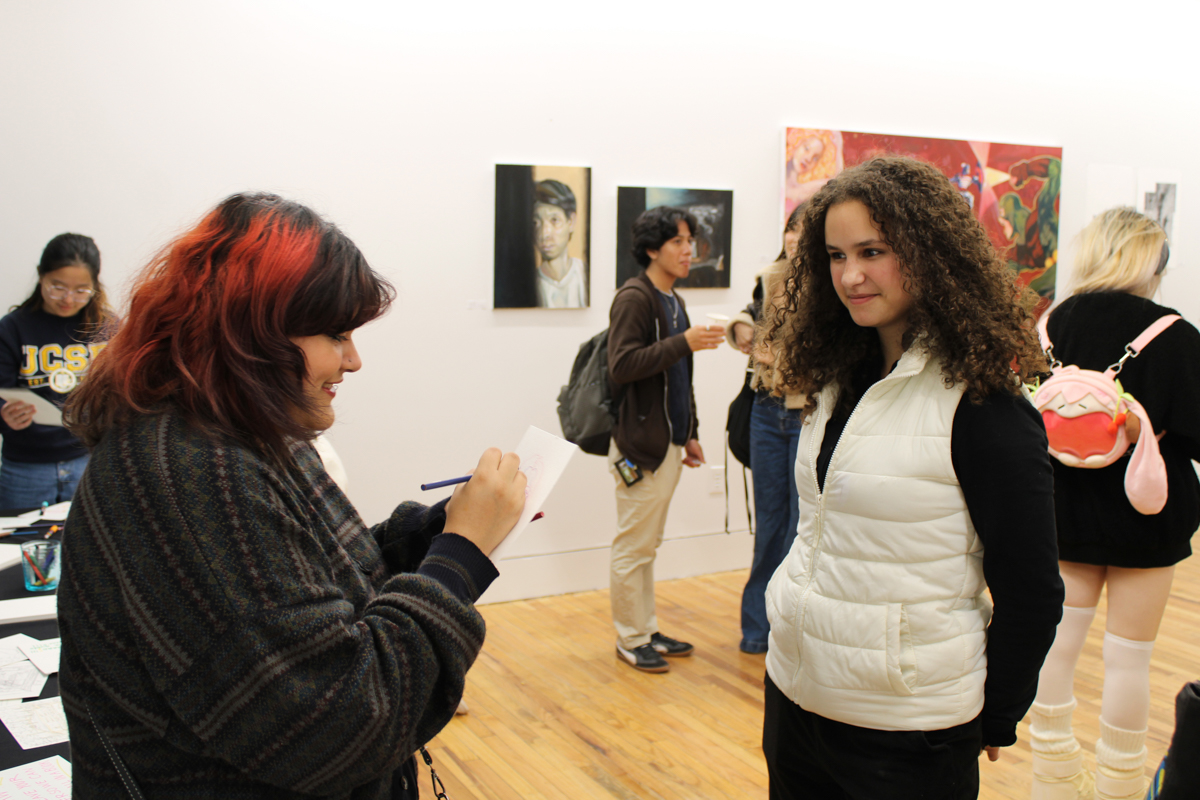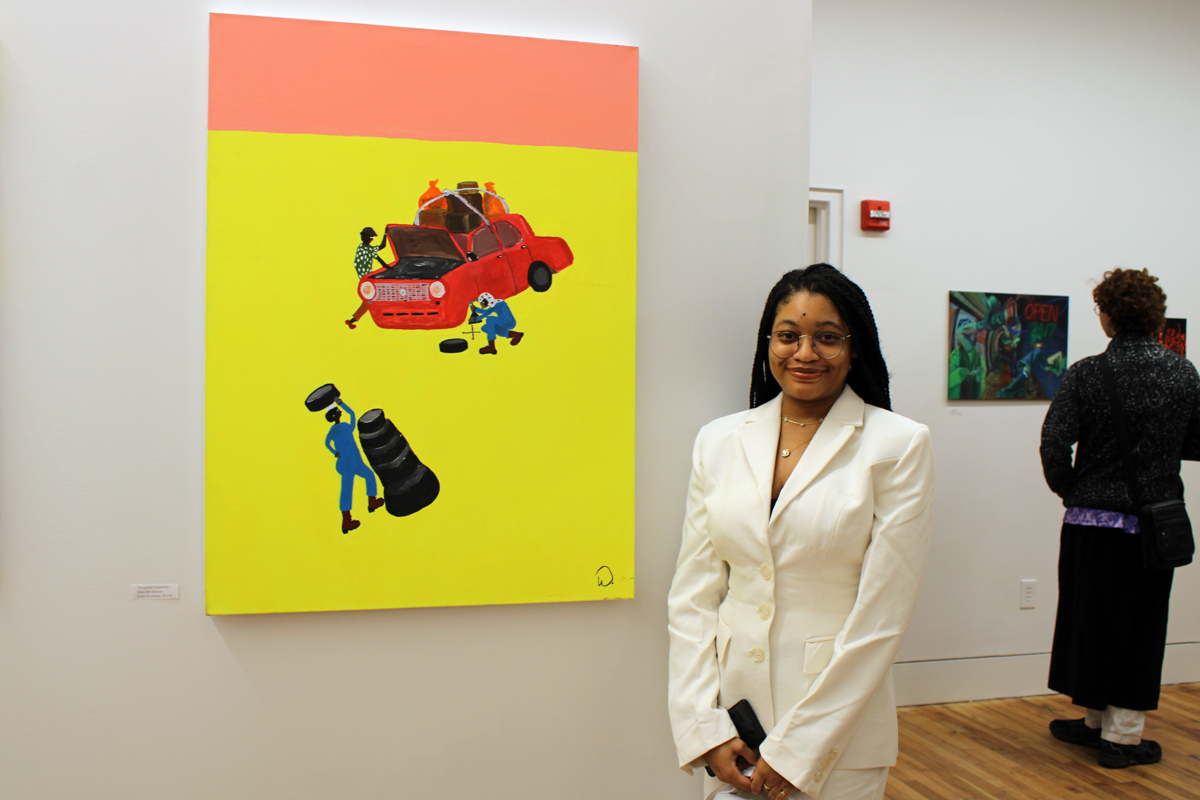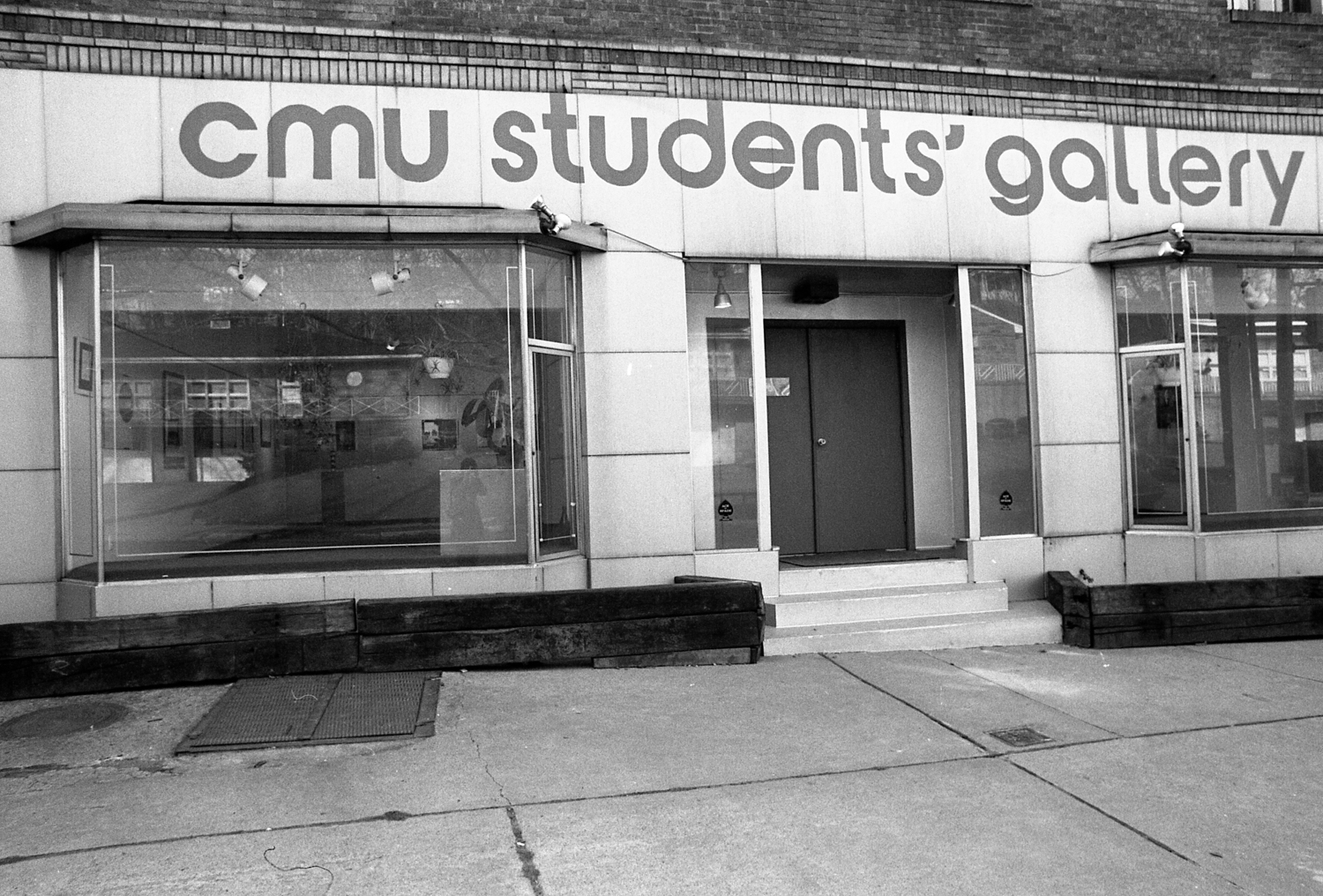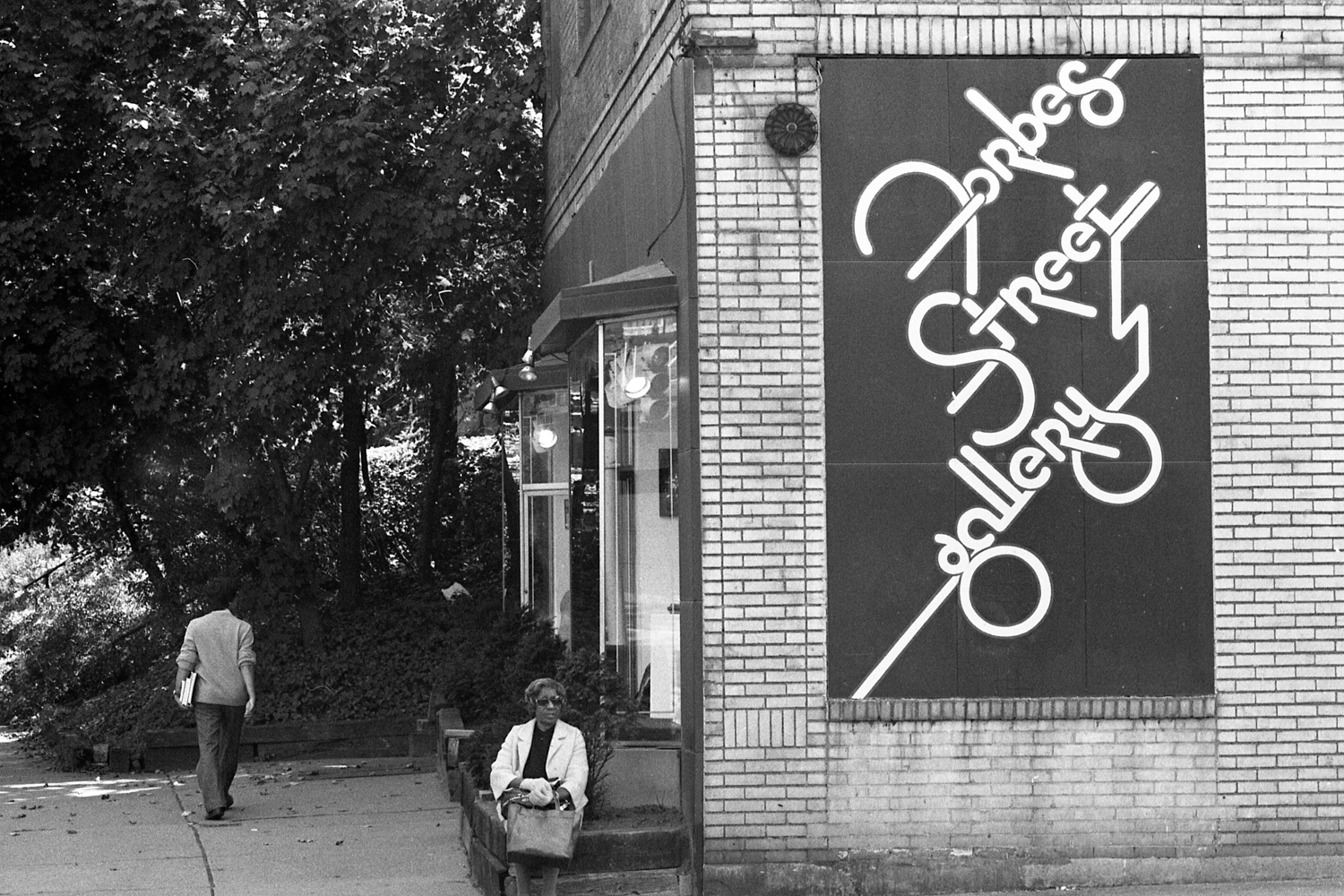
The Frame Gallery, a beloved institution at Carnegie Mellon University since its founding in 1969, will welcome students back this fall with a new lineup of interdisciplinary collaborations. Following an extensive $275,000 renovation, The Frame reopened its doors last year and reintroduced a dynamic space for students to express their creativity and engage as a community. With a new academic year ahead, The Frame is poised once again to continue its vital role hosting diverse exhibitions and events.
A Storied History
The Carnegie-Mellon Student’s Gallery, or Student Gallery as it was first more frequently known, opened on October 28, 1969, with more than 1,500 people in attendance. The moment was largely thanks to A. Aladar Marberger, a CMU student who would become an influential gallerist and outspoken gay rights and AIDS activist.
When the lease of the Woodlawn Pharmacy at the corner of Margaret Morrison and Forbes Avenue ended, Marberger and fellow CMU students Don Whipple and Stuart White petitioned the university to support the establishment of a student-run gallery by “bothering the people in the office of the president until, impressed, they came up with an emergency budget to get the remodeling started” (The Pittsburgh Press, October 30, 1969). The university allocated $10,000 to retrofit the space as a gallery, while also needing to obtain a commercial zoning variance “against neighborhood opposition that the gallery would become a ‘hippie hangout’” (The Carnegie Alumni News, February 1972). Dean of Student Affairs Earl Swank eased the fears of the opposition by assuring the community that “he would keep an eye on the operation from his apartment on the second floor of the building” (The Pittsburgh Press, October 30, 1969).
Student Gallery would eventually change its name three times in the following decades, becoming Forbes Street Gallery in 1974 and Forbes Gallery in 1982. During the 1996-1997 academic year, under the leadership of Karla Turcios (BFA ’97) and Enrique Sacasa (BFA ’97), the gallery’s student committee began a campaign to renew and rebrand the space as The Frame Gallery. (Sacasa designed the gallery’s original neon sign that adorned the entrance.) In addition to organizing exhibitions like Sofrito!, a Latino student artist group show, students also brought in important guest speakers, including artist Amalia Mesa Bains.
“From its founding, The Frame has demonstrated that at Carnegie Mellon, students can accomplish the extraordinary,” said Gina Casalegno, Vice President for Student Affairs and Dean of Students. “The Frame is a unique showcase for our students’ drive and passion as they uncover new forms of knowledge and expression through collaboration and creativity. The work of students to maintain this undergraduate-led space over generations is an impressive feat.”

After graduating from CMU, Marberger moved to New York at the encouragement of artist Elaine de Kooning, a visiting professor at CMU from 1969–70. In the 1970s, he took on the role of the first director of Fischbach Gallery, transforming it into a leader of contemporary realism. Marberger was the longtime partner of Robert Joffrey, the influential dancer, teacher, producer, choreographer, and co-founder of the Joffrey Ballet. When he was diagnosed with AIDS in 1985, Marberger spoke openly about living with the disease and was featured in numerous newspaper and magazine articles, as well as a television documentary. He was also an early volunteer for experimental treatments. He died of AIDS-related complications in 1988, just eight months after Joffrey.
Ensuring the Legacy of The Frame
Recent efforts to update The Frame began under Anne Crumley (CFA Interdisciplinary ’19), who served as the director of the space during the 2018–19 academic year. By that time, the gallery needed repairs: the wallboard had become damaged after years of use, the lighting was inadequate, and the general conditions in the space had deteriorated. Crumley worked with the next cohort of leaders, Coco Allred (BFA ’20) and Zachary Rapaport (BHA ’20), to further advocate for updates to The Frame.
“Stopping by the Frame on Friday evening was a ritual to gather, discuss, and celebrate the creative output of our arts community and share with the university at large,” Allred said. “Directing the Frame, I learned so much about what it takes to run a gallery, advocate for the arts, and support artists.” After graduation, Allred organized community art events and completed an ArtistYear, an AmeriCorp program that places teaching artists in schools.
In 2020, a division of CMU’s Student Affairs, SLICE (Student Leadership, Involvement, and Civic Engagement) worked with the Committee on Student Organizations to award The Frame a grant to update the space. Updates began under the next cohort of leaders, Iz Horgan (BFA ’21) and Moxie Duncan-Tessmer (BFA ’21), who, despite pandemic restrictions, began the process of renovating the gallery.

“I always loved that the Frame itself was a mystery to pedestrians,” Horgan said. “The gallery disguises itself as a storefront, with large, display-like windows. One day if you walk past, it might be empty and the next day it might be completely transformed, almost overflowing with artwork. I am proud of the many hours of hard work and negotiation my team members, along with the cohort before us, dedicated to the Frame Gallery.”
Once renovations began, it quickly became apparent that The Frame needed more than cosmetic repairs in order to serve as a well-functioning space. With this understanding, the School of Art worked with student leaders to advocate for a full renovation of the Frame in order to restore its prominent role on campus. The more extensive renovation during 2022 and 2023 stemmed from the advocacy of student leaders and support from across the university. The Provost’s office and Division of Student Affairs, CMU Housing Services, the CMU Universal Access Committee, Student Government, the College of Fine Arts, and the School of Art all contributed funding.
“For more than 50 years, The Frame has hosted hundreds of exhibitions, performances and events,” said Provost James H. Garrett, Jr. “Its scope reaches beyond the College of Fine Arts and presents opportunities for interdisciplinary collaborations across Carnegie Mellon and in our community. This renovation ensures the longevity of this important asset for our community.”
In order to make the space ADA accessible, a new restroom was constructed on the ground level and the entrance was modified to include a ramp. Further improvements brought the space up to current gallery standards, ensuring that a wide variety of exhibitions and events can be held at The Frame. These improvements include: replacing the existing wallboard with double-layered plywood and a drywall finish so that art may be safely hung on the walls; replacing the lighting with easy-to-configure and energy-efficient LED fixtures; and general maintenance of the space, such as floor refinishing, new paint, and new baseboards. The renovation also includes a complete rehab of the facade and the installation of new signage.
Bridging Past and Future
As the pandemic made ever more evident, in-person gathering spaces are invaluable to student creativity on CMU’s campus. Not only does The Frame provide a space for the CMU and Pittsburgh communities to experience the creativity of students, but it also offers a welcoming and inclusive venue for the free exchange of ideas and learning, which is a core value of Carnegie Mellon University. Despite new ways to connect online, nothing can replace the palpable and engaging experience of artistic experimentation in physical space.
“From the vision and tenacity of Aladar Marberger in carving out an entirely student-run campus space to the scores of student-artists who have exhibited in the space since its founding, The Frame has played a unique role in fostering generations of creative thinkers and cultural leaders at CMU,” said Charlie White, Head of the School of Art.
As The Frame enters a new era, the original inspiration of Aladar Marberger and his classmates to establish a public-facing space dedicated to artistic exploration and creative expression remains as vital as ever. The recent renovation ensures The Frame will remain an important center of creative expression for CMU and the greater Pittsburgh community for generations to come.
Research provided by Nick Mlakar.





